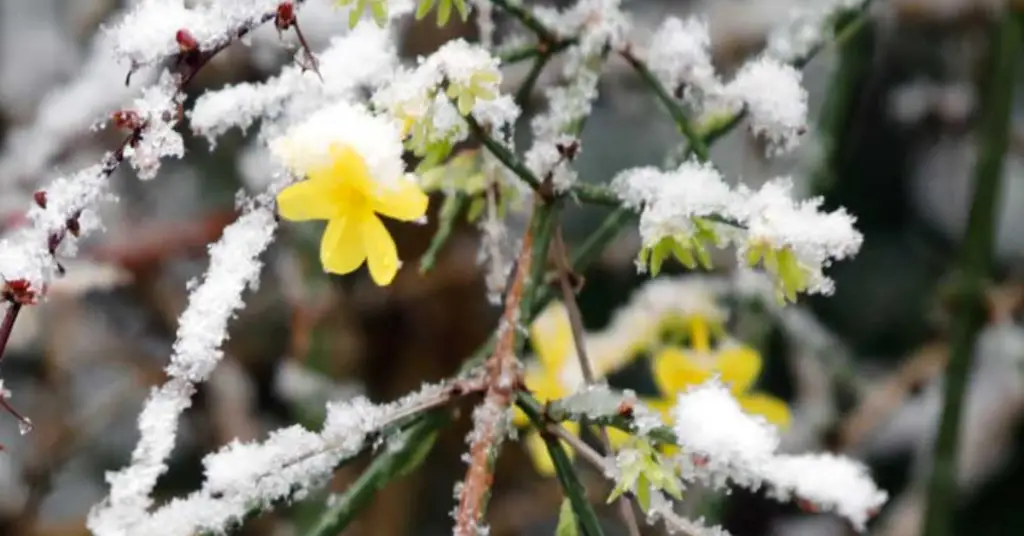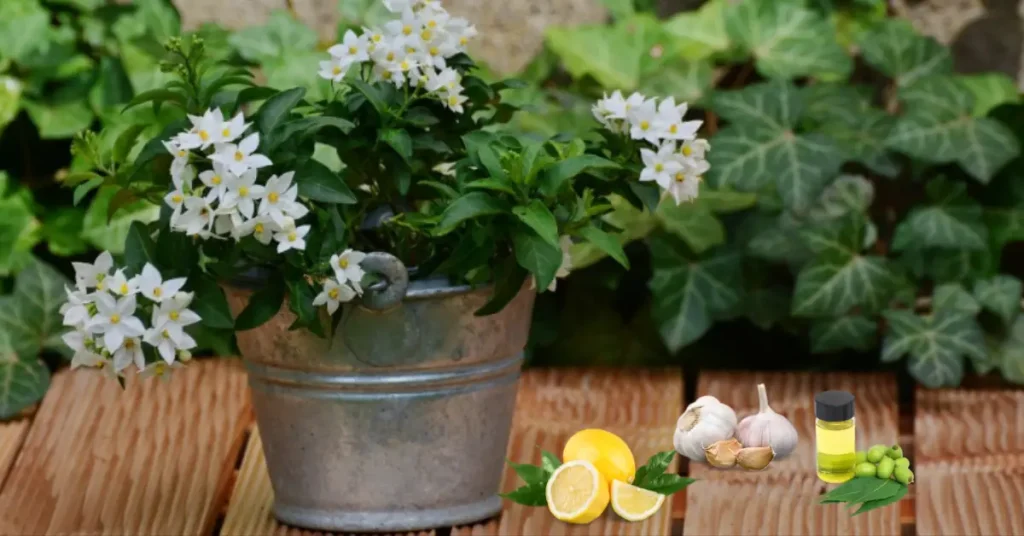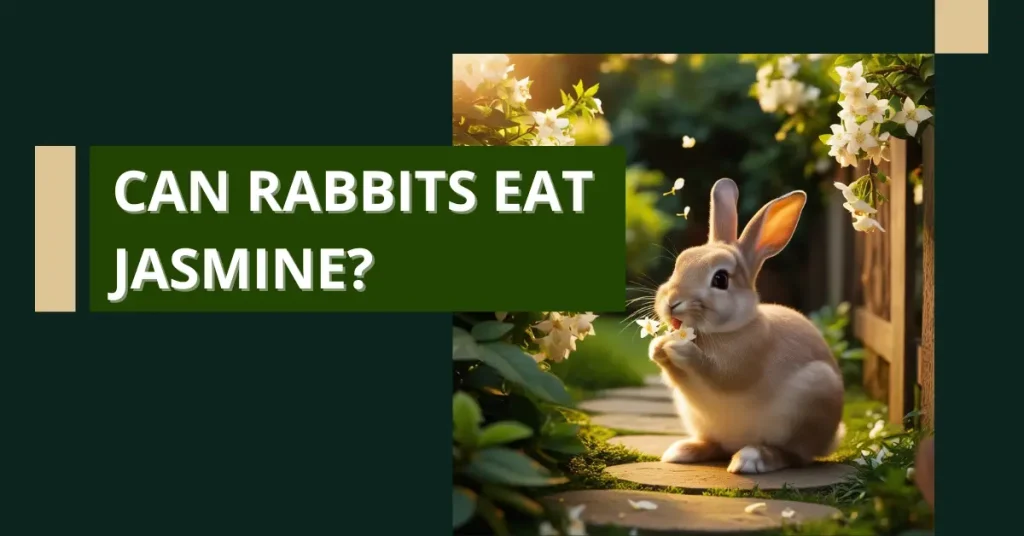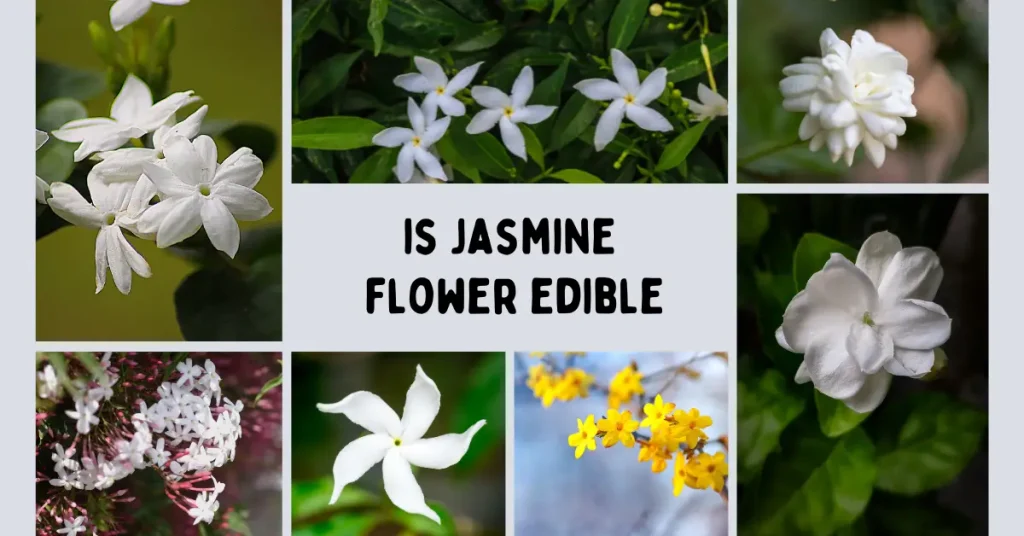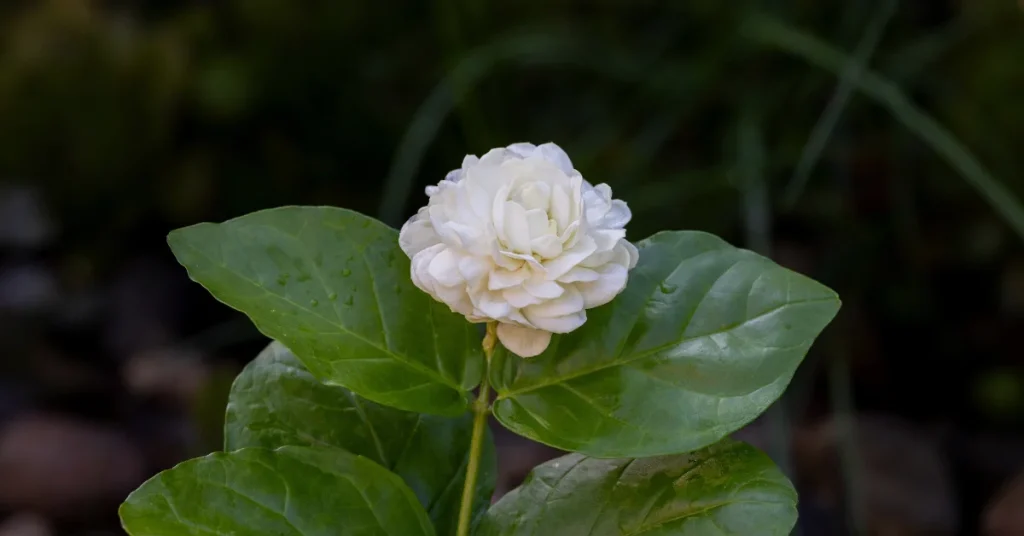Ground Cover Jasmine – 5 Varieties As Ground Cover
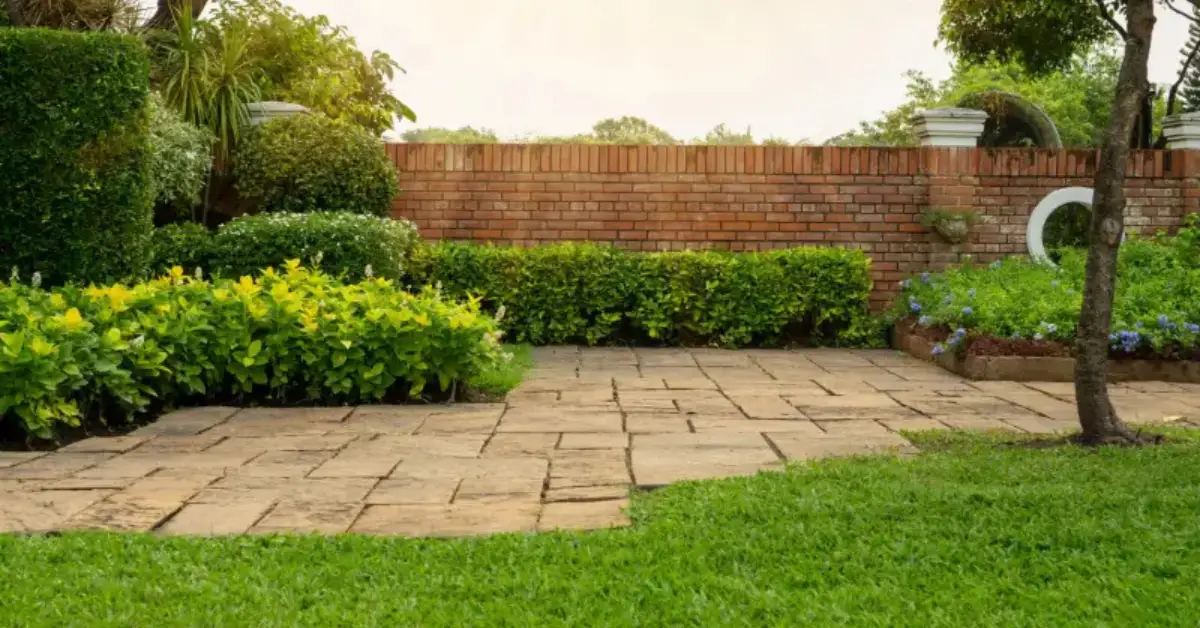
Whenever we think of jasmine, we are reminded of summer evenings filled with a heady floral fragrance to fill the air. Although some varieties of jasmine plants are fragrant, not all are. Jasmines belong to the Oleaceae family and some species are known for their spreading habit.
Unlike many other varieties of jasmine that grow vertically as shrubs or climbing vines, ground cover jasmine height remains close to the ground, forming a dense greenery carpet covering the ground.
As a result of its characteristics, it is an excellent choice for covering bare ground, filling in spaces between larger plants, or spilling over walls and borders to create a cascading effect. Here, we will cover everything you need to know about ground cover jasmines, suitable varieties, planting tips, care requirements, and the benefits as ground cover.
Types of Jasmine Ground Cover
With its lush green foliage, various jasmine varieties can thrive in different conditions and provide both aesthetic appeal and functional benefits. These low-growing plants not only help suppress weeds but also create a vibrant, lush carpet of greenery that enhance the overall look of outdoor spaces.
Here are the options you can select the variety of jasmine as Ground Cover.
Asiatic Jasmine Ground Cover
Also known as Asian star jasmine or yellow star jasmine, this plant is a versatile ground cover or climbing plant with fragrant flowers that attract songbirds. Especially in warmer climates, its dense mat of dark evergreen leaves makes it a very desirable groundcover and border plant. You can neatly edge it to give it a manicured appearance. This plant thrives in sun or shade, suppresses weeds, and resists hungry deer. Covering large areas with bare-root plants is an economical option.
The best time to plant Asiatic jasmine groundcover is when it’s cool outside. Space plants about a foot or two apart when mass planting to give them space to spread. At the same depth as the original nursery pot, dig a hole twice the size of the root ball. Take the plant from its pot, loosen the soil with your fingers, and place it in the hole. Put soil around the roots, compact it, and water it. Water frequently (twice a week) for the first month, then cut back to once a week until the plant has established itself.
Star Jasmine
Star jasmine (Trachelospermum jasminoides) is a vine that produces fragrant white blooms that attract bees. It thrives in California and the southern United States, providing excellent ground cover and climbing decoration. It forms a thick, dense mat of glossy green foliage, loaded with pretty star-shaped flowers in late spring, and can be easily trained to spread horizontally.
Vines grow quickly once established and can grow several feet in one season. Moreover, these low-maintenance plants become drought-tolerant after one year. Additionally, the evergreen foliage keeps its good look all year long.
Growing star jasmine ground cover in warm climates (USDA Zones 8-10) will allow it to overwinter. At first, star jasmine may be slow to grow and may require some time to establish. As it matures, it grows to about 3 to 6 feet (1-2 meters).
Always keep your plant’s height even by pruning any upward-reaching shoots. Aside from ground cover, star jasmine plants can be trained to grow on trellises, doorways, and posts to produce beautiful, fragrant decorations.
Winter Jasmine
Winter jasmine (Jasminum nudiflorum) has long arching branches and is a medium-sized deciduous shrub. This plant is also a great choice as a ground cover for slopes and as a retaining wall cover. It’s usually grown as a shrub or a small tree with yellow flowers.
In early spring, bright yellow 1-inch flowers appear. As opposed to different varieties, this variety typically blooms later in the year. Other plants go dormant long before this.
This plant can handle colder temperatures much better than others. Its trailing growth habit makes it ideal for covering slopes, rocky areas, or as a border along pathways.
It thrives in a range of soil types and can tolerate drought once established; a low-maintenance option for gardeners. Additionally, it provides a habitat for pollinators and helps suppress weeds.
Angel Wing Jasmine
Angel wing jasmine, also known as shining jasmine, is an attractive ground cover with a shrubby growth habit. It produces abundant white flowers that are fragrant and have purple undersides.
This plant has round, thin petals and narrow centers. This is an evergreen shrub of small flowers that spills out of containers or can be used as a filler that spreads and fills the space between shrubs.
The intoxicating scent and white flowers make this plant a good choice. The plant’s flowers emit sweet scent and make the evenings fragrant.
As a ground cover, it is adaptable to various landscapes and thrives good in well drained soil. Additionally, it is relatively low-maintenance and can tolerate some drought once established.
Beyond its visual appeal, this jasmine variety attracts pollinators like bees and butterflies and enhance the biodiversity of gardens.
Wild Jasmine
The wild jasmine grows like a shrub compared to other varieties. Wild jasmine is also known as yellow jasmine. This small evergreen shrub (or semi-evergreen in colder climates) produces clusters of deep yellow blooms in spring to early fall. It is a good option as a ground cover.
It is also a good choice for hedges and hanging plants.
This plant is drought-tolerant and does best in full sunlight. Even though this plant can tolerate some cold compared to others, planting it in cold regions is not a good idea. Choose this plant if you want delicate, thick leaves and yellow flowers that are simple and easy to grow. These blooms do not produce a substantial scent compared to other jasmine plants.
How To Grow Jasmine As a Ground Cover?
Choosing The Site
As a ground cover, jasmine thrives in full sun to partial shade. Ensure that the section of your garden you select gets six hours or more of direct sunlight each day. Well-draining soil and an abundance of organic matter are essential. Avoid planting jasmine as ground cover in soils that are heavy in clay or have poor drainage.
Look for areas where you need soil stabilization, weed control, or lush green carpeting.
Preparation of The Soil
Prepare the soil by removing any weeds or grass before planting jasmine ground cover. To improve drainage and fertility, loosen the soil with a garden fork or tiller and amend it with compost or well-rotted manure.
It grows well in soil with good drainage. However, it grows best in damp, organic-rich soil. Plant health is negatively affected by alkaline soil above a pH of 8.0.
Planting Process
Make a hole that is just a little bit bigger than the root ball in order to plant jasmine ground cover. After placing the plant into the hole, make sure the top of the root ball is parallel to the soil’s surface. Refill the hole with soil, firming it gently around the plant. Keep watering often (twice a week) for the first month, then reduce to once a week.
Care for Ground Cover Jasmine
Watering
Maintain an even moisture level in the soil during the growing season, but do not let the soil become waterlogged. Depending on the weather, water deeply once or twice a week. As soon as the ground cover is established, it becomes relatively drought-tolerant and then requires watering during periods of prolonged drought.
The absence of watering makes them a great turfgrass alternative, especially during a dry spell or extreme heat.
Fertilizing
Planting ground cover jasmine in healthy soil typically requires little to no fertilizer. If needed, treat the plant in early spring with a balanced, slow-releasing fertilizer to encourage growth and blooming. Choose a fertilizer formulated specifically for ornamental plants containing nitrogen, phosphorus, and potassium and is tailored to promote healthy growth.
For organic preferences, consider incorporating compost or well-rotted manure into the soil around the plants. In addition, it enriches soil with nutrients and encourages beneficial microbes.
Pruning
Remove dead or damaged branches from the jasmine ground cover early in the spring. A sharp pruner or even a shear can be used. Pruning keeps the appearance neat and tidy while encouraging new growth.
After flowering, prune your plants to control their size and shape.
Pests Management
Jasmine ground cover isn’t too susceptible to pests and diseases. Insects such as aphids, spider mites, and scale insects may occasionally affect it. These can be controlled with insecticidal soaps or horticultural oils.
Inspect your plants , identify insect pests and take action if there are any signs of pest infestation.
Regular inspections are recommended for optimal plant health. A proactive approach not only safeguards the garden’s beauty but also fortifies it against future pests and diseases.
Benefits of Jasmine Ground Cover
When used in gardens or landscape, jasmine ground cover offers several benefits.
- Ground cover jasmine adds visual interest to gardens with its lush foliage and beautiful flowers. Its spreading habit softens hardscape edges, fills gaps between plants, and provides verdant carpeting beneath trees and shrubs.
- Its low growth characteristic makes it an effective choice for covering bare ground and preventing soil erosion.
- Jasmine ground cover also suppresses weed growth and thus reduces the need for herbicides and manual weeding.
- Jasmine as ground cover plants at outdoor spaces attract pollinators such as bees and butterflies.
Final Words
Due to its lush foliage, fragrant flowers, and low-maintenance nature, jasmine is an ideal plant for ground cover. Follow the tips above to successfully grow and maintain jasmine as ground cover outdoors.
Remember to consider the growing zone and other limiting factors that may affect your selection.

I am Yasir Riaz, an Agronomist for more than a decade. Helping local farmers and Gardeners to improve their crops and Gardens and overall productivity. In addition to my work in agriculture, I have also delved into the digital world as an SEO writer and blogger. Through my blog, I aim to educate and inspire others about the Chameli Flower (Jasmine).

